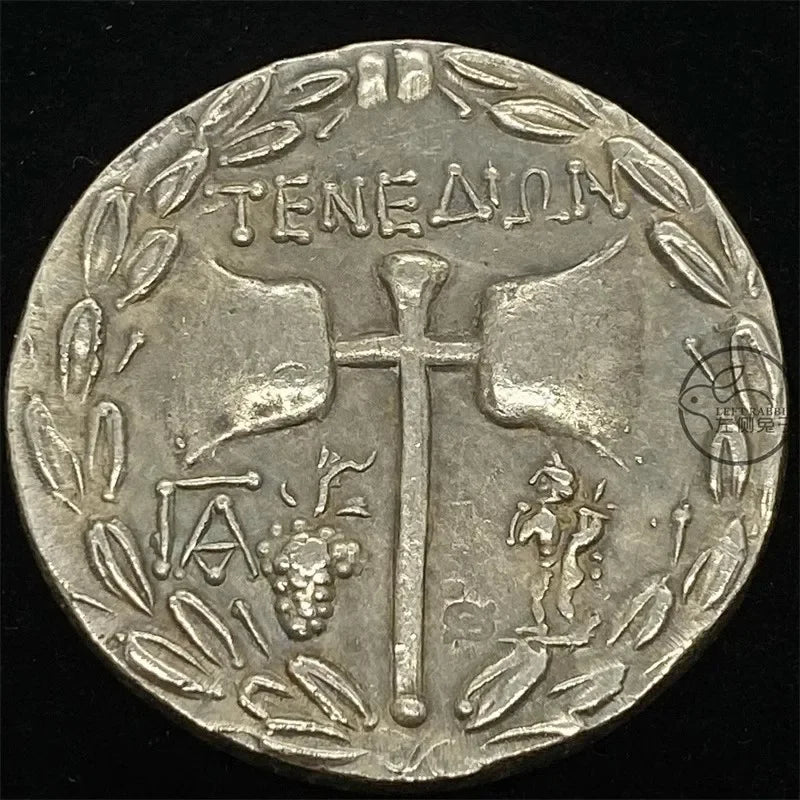Hello Caesar
Tenedos Drachm Replica (c. 100–70 BC) – Janiform Heads & Double Axe
Tenedos Drachm Replica (c. 100–70 BC) – Janiform Heads & Double Axe
- Secure Checkout
- 14-Day Easy Return
- Delivery within 15-30 days
Couldn't load pickup availability
This replica reproduces a silver drachm struck in the ancient Greek city of Tenedos (located in the Troad, near modern-day Turkey) during the late Hellenistic period (c. 100–70 BC). Tenedos was strategically placed near the entrance to the Hellespont and was an important naval and trading hub.
Obverse (Front)
Features janiform heads (two faces conjoined), usually interpreted as male and female, or as the Dioscuri (Castor and Pollux). This dual image symbolizes unity, balance, and duality — fitting for a city that mediated between East and West.
Reverse (Back)
Depicts a labrys (double axe) within a laurel wreath, accompanied by various control marks such as grapes, caduceus, or other symbols, and the ethnic legend ΤΕΝΕΔΙΩΝ (of the Tenedans). The double axe was a sacred symbol in Greek religion and may also have been a civic emblem of Tenedos.
Historical Background
- Tenedos, located opposite Troy, played a significant role in both mythology and history — the island is even mentioned in the story of the Trojan Horse, where the Greeks were said to have hidden their fleet.
- By the Hellenistic period, the city struck its own distinctive coinage, projecting both civic pride and religious symbolism.
- The janiform heads emphasized duality and partnership, while the double axe connected Tenedos to ancient ritual symbolism and possibly local cults.
Share






